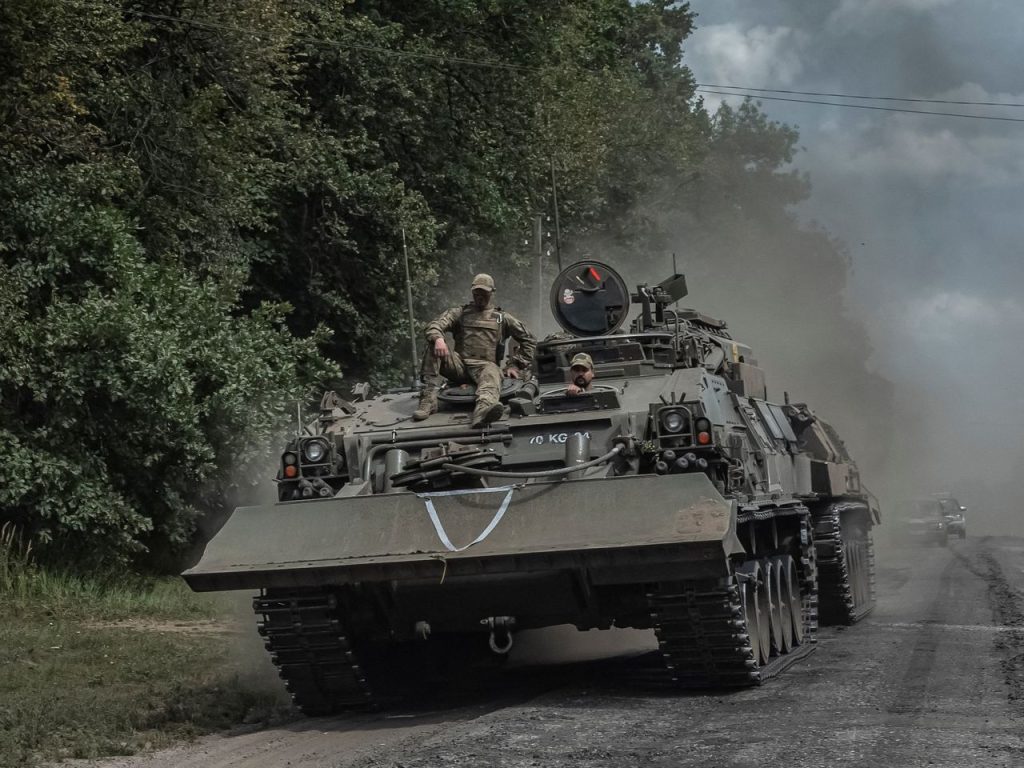Ukraine Intensifies Offensive, Advancing into Russian Territory
2 min read

Ukraine has intensified its military operations, advancing deeper into Russian territory and making notable progress in several regions. This offensive, which marks Ukraine’s most significant incursion into Russia since the full-scale invasion began in 2022, has led to heightened tensions and a state of emergency in affected areas.
Last week, Ukrainian forces launched a surprise attack on Russia’s Kursk region, prompting Russian authorities to declare a state of emergency. Ukrainian President Volodymyr Zelensky reported that Ukrainian troops had advanced by 1-2 kilometers into Kursk and captured 100 Russian soldiers. However, Russia has claimed to have halted further Ukrainian advances.
The situation remains fluid, with conflicting reports from both sides about the extent of the territorial gains. Major-General Apti Alaudinov of the Chechen Akhmat special forces, speaking on Russian state TV, asserted that Russian forces had nearly “completely blocked” the Ukrainian military. Conversely, Ukrainian army chief Oleksandr Syrskyi claimed that Ukrainian troops had taken control of the Kursk border town of Sudzha. Ukrainian television has broadcast images of Ukrainian soldiers removing a Russian flag from a local school.
Despite these claims, Ukrainian Foreign Ministry spokesman Heorhiy Tykhy emphasized that Ukraine does not seek to permanently occupy Russia in territory. Instead, he stated that Ukrainian defensive operations would cease once Russia agrees to a fair peace settlement. President Zelensky has also discussed the potential establishment of “military commandants’ offices” in the region as part of a broader strategy to manage the conflict.
Deputy Prime Minister Iryna Vereshchuk revealed plans for a “security zone” in Kursk aimed at protecting Ukraine’s borders. This zone would include provisions for humanitarian aid and evacuation corridors for civilians both within Russia and Ukraine. Local opposition figures in Russia, such as Yan Furtsev from the liberal Yabloko party, have reported that the situation in Kursk is dire, with about 180,000 civilians needing evacuation and significant psychological stress among those displaced.
 Additionally, Russia has declared a second state of emergency in the Belgorod region due to damage from drone attacks and shelling. Russian authorities reported shooting down 117 drones targeting Kursk, Voronezh, Belgorod, and Nizhny Novgorod. Ukrainian military sources described the drone strikes as part of a meticulously planned operation, targeting Russian airfields and infrastructure.
Additionally, Russia has declared a second state of emergency in the Belgorod region due to damage from drone attacks and shelling. Russian authorities reported shooting down 117 drones targeting Kursk, Voronezh, Belgorod, and Nizhny Novgorod. Ukrainian military sources described the drone strikes as part of a meticulously planned operation, targeting Russian airfields and infrastructure.
US President Joe Biden has commented on the situation, noting that the Ukrainian offensive is creating a significant dilemma for Russian President Vladimir Putin. European allies have also voiced strong support for Ukraine. Finnish and Estonian prime ministers have endorsed Ukraine’s military actions in Kursk, while Latvia’s foreign minister has argued that Kyiv has the right to use NATO weapons on Russian soil. This stance challenges Russia’s “red line” warnings and aligns with Germany’s position that Ukraine’s right to self-defense extends beyond its borders.
The ongoing conflict and military actions highlight the escalating nature of the war and the international community’s complex response to Ukraine’s defensive and offensive strategies.